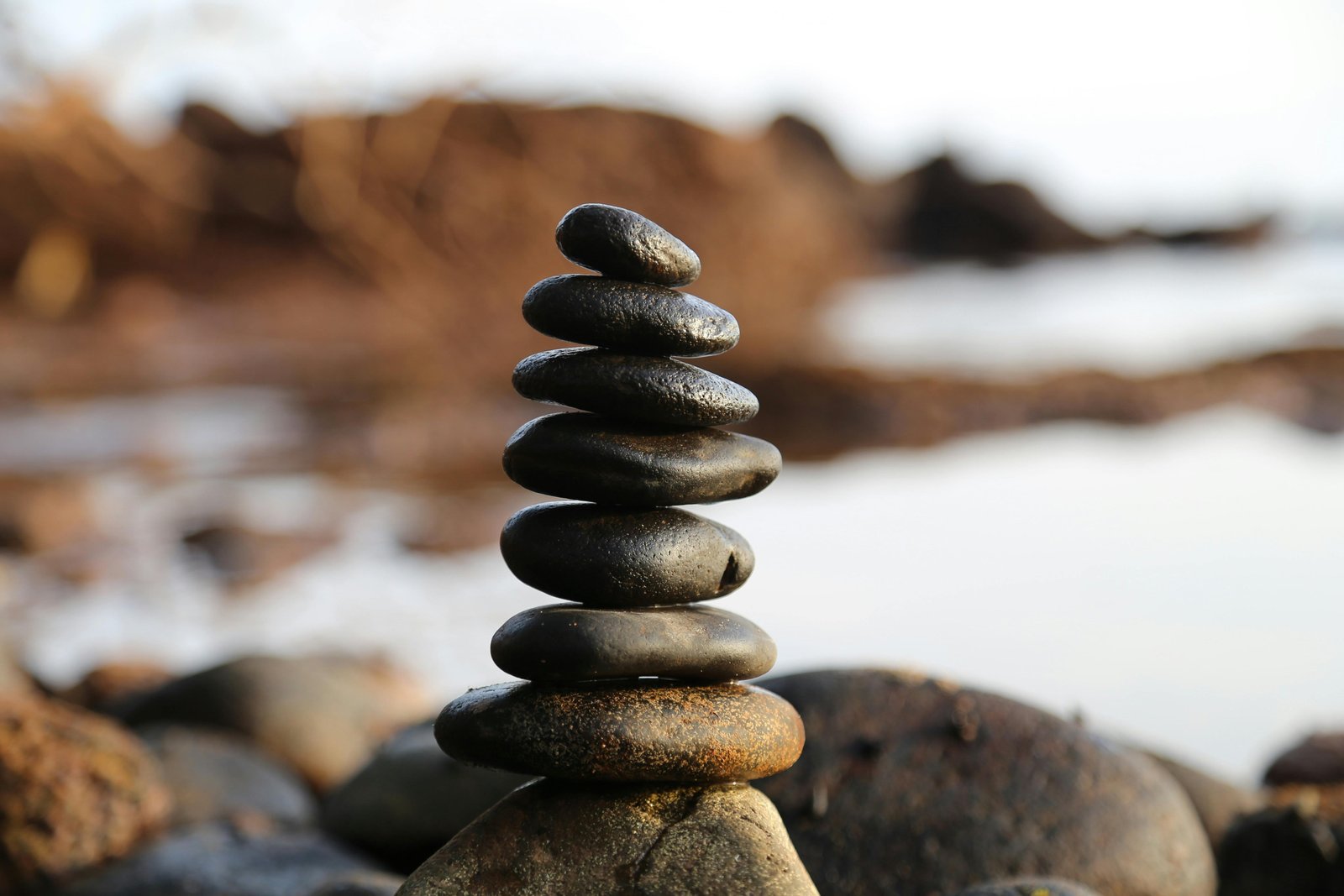Note: As an Amazon Associate, I earn from qualifying purchases.
1. Start Your Day in Silence
Rather than reaching for your phone the moment you wake up, choose to sit in silence for the first 5 to 10 minutes of your day. Sit upright, close your eyes, and take deep, slow breaths. Let go of the urge to plan or think. This short moment of stillness calms your nervous system and sets a peaceful tone for the day.
2. Practice Conscious Breathing
Your breath is a direct line to your inner state. Shallow breathing signals stress to the body, while deep, conscious breaths induce calm. Try this exercise: inhale for four seconds, hold for four, exhale for six seconds, and pause for two. Repeat five cycles. Conscious breathing can be done anywhere and has the power to instantly regulate your emotions.

3. Limit Digital Consumption
Constant exposure to digital screens overstimulates the brain. Notifications, social media feeds, and news alerts can create mental clutter and emotional overwhelm. Set boundaries for your screen time. Consider having digital detox periods daily where your phone is off or in another room. Use that time for reading, nature, or creative work.

4. Engage in Activities Without a Goal
We are conditioned to be productive, but healing and peace often come from purposeless moments. Allow yourself time each day to engage in something that does not require achievement. This could be sketching, journaling, walking without a destination, reading or listening to music. These moments reconnect you with your being rather than your doing.
Over the past few years, I’ve read many books about mindfulness, healing, and personal transformation — but some truly stayed with me. These four have changed how I view stillness, self-worth, and presence. I recommend them to anyone looking to deepen their inner peace.
1. The Path to Inner Peace by Sumitra Shakya
This book is a powerful collection of Zen-inspired stories that guide you gently toward emotional balance, mindfulness, and healing. Each chapter offers a short, simple practice or reflection that’s easy to apply in daily life — even during stressful moments.
2. The Dalai Lama’s Little Book of Inner Peace by His Holiness the Dalai Lama
A timeless classic. In this book, the Dalai Lama shares his wisdom on how to live with compassion, calm, and clarity — even in a chaotic world. It’s deeply spiritual yet very accessible, making it perfect for both beginners and longtime seekers.

5. Use Affirmations to Rewire the Mind
Words carry energy. Repeating affirmations daily helps shift your subconscious beliefs. Choose phrases that resonate with your journey toward peace, such as:
- I allow myself to be calm.
- Peace begins with me.
- My mind is a safe and quiet place.
Repeat them aloud, write them down, or integrate them into your meditation practice. Over time, your inner dialogue becomes more supportive and grounding.

6. Create a Peaceful Environment
Your external environment reflects and influences your internal state. Clear clutter, use soft lighting, and incorporate calming elements like plants, essential oils, or neutral-toned decor. Scented candles, flowing fabrics, and natural textures all contribute to a sense of calm. A peaceful space invites a peaceful mind.
Bonus Tip: Elevate your bath ritual with a natural wooden bath tray — perfect for holding a book, candle, tea, or tablet while you unwind.

7. Move Your Body Mindfully
Gentle movement helps release tension and reconnects you to your body. Practices like yoga, tai chi, or simply stretching can center your awareness and calm your thoughts. Mindful walking, where you focus on each step and breath, also grounds you in the present moment.

8. Journal to Declutter the Mind
Writing can be a therapeutic release. Set aside 5–10 minutes daily to write freely. Do not edit or judge your thoughts. Just let them pour out. You can start with prompts like:
- What is taking up space in my mind today?
- What am I holding on to that I can release?
Journaling brings clarity and emotional release, helping you understand and process your inner world.

9. Practice Self-Compassion
You do not need to be perfect to be at peace. Let go of the pressure to always have it together. Speak to yourself with kindness. Forgive yourself for past mistakes. When your inner dialogue becomes gentle, your nervous system begins to relax, creating space for genuine rest.

10. Trust the Process of Unfolding
Inner peace is not always immediate. Some days will feel chaotic, and that is part of the journey. Trust that you are exactly where you need to be. Surrender control and embrace uncertainty. Know that peace is not the absence of noise, but the ability to stay centered within it.
Closing Thoughts
Cultivating inner peace is a continuous process of choosing yourself. It is about slowing down, turning inward, and allowing space for stillness to arise. The more you practice these tools, the more you develop an inner sanctuary that no external circumstance can shake.
Start today, not by doing more, but by being present with less.